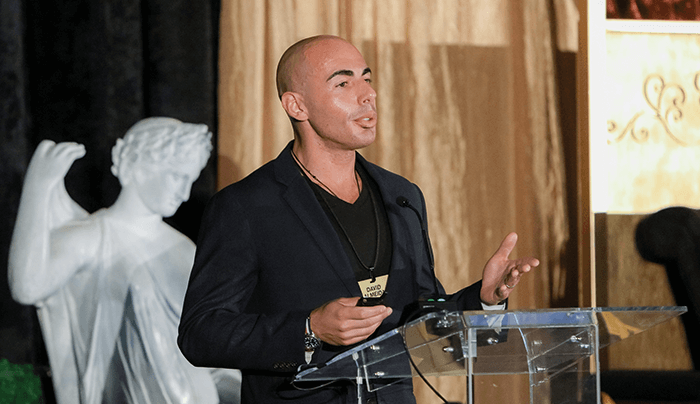
- Procrastination is the first step on the path towards the calamity of inaction
- Delaying decisions can have serious consequences like missed opportunities, poorer outcomes
- Taking a “Decision Diagnosis” approach will give you an antidote to decision malaise – and allow you to come to fruitful and focused decisions
We are used to having everything at our fingertips these days, but the endless deluge of information minimizes our ability to process it. It creates a weakened state of critical thinking. A never-ending cacophony of notifications, messages and other electronic distractions has reduced our attention span and our decision-making ability to new lows: we have reached a calamity of inaction. We procrastinate and put off for tomorrow what we should be doing today, and this has an overwhelming negative impact on our ability to solve the problems we face.
Over the years, I have noticed the common difficulties people face with making decisions. As a vitreoretinal surgeon with a background in both research and business, I decided to approach the common struggles of decision making with a framework that blends both the spheres of medicine and management. The goal is an approach that allows one to become unstuck from mediocrity and procrastination, and head towards effective personal and professional strategy. Whether we like it or not, we must all make decisions; delaying them results in significant negative consequences, including the loss of precious time, missed opportunities, and the consequences of poor decisions. My first pearl of wisdom? You can’t make successful decisions, if you don’t know what those decisions are asking of you. In my book, Decision Diagnosis, there are seven antidotes to decision malaise that allow you to uncover what you need to know and understand about the situation at hand to arrive at fruitful and focused decisions. Via brokering of economics theories, the scientific method, and a surgical approach to medical problems, we can consistently arrive at clear methods to diagnose decisions.
My years as a physician and surgeon have given me insight into the diagnosis of complex diseases. I have learned that they can appear in many ways. Sometimes, a patient’s disease presents itself in a textbook way, making the diagnosis and treatment straightforward. However, most of the time, diseases present in convoluted manners, leaving doctors confused, with the possibility of complications with catastrophic implications. Physicians and surgeons routinely go through seven attributes of a medical problem to tease out the pertinent positives and negatives from a patient, to arrive at the right diagnosis, and manage the patient with the correct treatment. In my book, I hybridize this medical technique normally used for complex diagnoses with my work in research and business leadership to create seven antidotes to decision procrastination.
When you apply this framework, I believe it will provide you with useful insights. Most importantly of all, it will aid a greater understanding, clarity, and focus for strategy and decision-making. The seven antidotes are all about uncovering the relevant factors of your decisions for success. Indeed, there are seven characteristics that you need to evaluate and judge to enhance your ability to be efficient and successful in decision-making:
- character
- setting
- timing
- quality
- quantity
- aggravating factors
- alleviating factors.
- Practice: Practice makes permanence. Practice with purpose and passion and it will transform and allow for positive development. You need to break the cycle of mindless practice and instill passion and purpose in the skills you hope to hone.
- Assess the problem: Identify the character of the conflict. Ask open-ended questions like who, what, when, where and why? Without knowing the character of the problem, the best decision may elude you.
- Collect information: Who are the people, places and things relevant to your decision?
- Triage: Define how much time you have to make the decision in question. Triage your decision to assess if you need to resolve it right away or if it can be dealt with as a lower priority?
After coming to terms with the relevant aspects of a decision, it is time to execute! Strategy is loosely defined as some series of actions we employ to achieve a desirable outcome, and a defined framework is part of a coherent strategy. Ultimately, your strategy must achieve your goals – otherwise, you must consider switching strategies. But what makes a strategy successful? My two tenets of any successful strategy are planning and execution. I plan like an economist, but I execute like a surgeon. In planning, you must employ some analysis. Whether it’s a simple pro/con list, the PACT framework, or a formal SWOT analysis, you must bring your decision out of your personal vacuum and into context and consequence. But, when you have done all the planning, you must go out and execute it – just like when I perform a surgery, there is no time for uneasiness or hesitation. A good decision today is always preferred over a perfect decision tomorrow. So, no matter what goal you are trying to achieve, make a PACT, then plan and execute. Don’t let time spent on one deviate the path for the other. David Almeida holds an MD from Queen’s University in Kingston, Ontario, an MBA from George Washington University School of Business in Washington, D.C., and a PhD in Pharmaceutical Drug Research from the University of Szeged. A 2017 The Ophthalmologist Power List Rising Star, he’s not only a practicing surgeon with Vitreoretinal Surgery, PA in Minneapolis-St. Paul, Minnesota, but also cofounder of the pharmaceutical company Citrus Therapeutics. His best-selling book, Decision Diagnosis: Seven Antidotes to Decision Procrastination, blends the spheres of medicine, science, business, and leadership to present new concepts and strategies for successful decision making.
